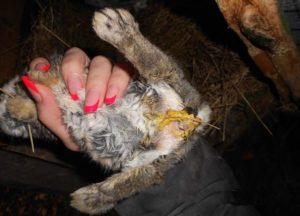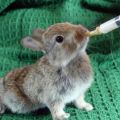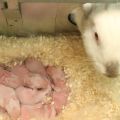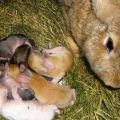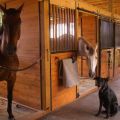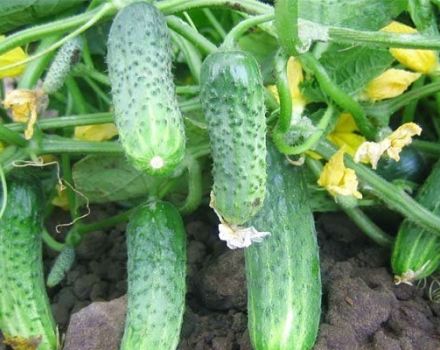When and at what age you can remove rabbits from the rabbit and the rules
Rabbits are born completely helpless. They are born blind and bald. Therefore, at the beginning of life, animals need maternal care. In this case, an adult rabbit is able to simultaneously feed a maximum of 8 cubs. When more rabbits are born, the excess is moved to another nest. Many farmers are wondering: when is it better to remove the rabbits from the rabbit?
At what age are the rabbits separated from the rabbit
For 14-20 days, the cubs feed on mother's milk. This contributes to the development of normal immunity and strengthening the body of rabbits. In this case, the moment comes when they need to be moved to a new place. There are several options for carrying out this procedure.
Departure on day 28
Monthly rabbits are recommended to be left with their mother. At this time, their digestive organs are just beginning to adapt to the food of adult animals. It is allowed to take the cubs on the 28th day if the male covered the female one day after giving birth. Thanks to this, the rabbit will have a chance to rest for 2-3 days before a new round. But this option is considered the most disadvantageous.
Weaning in 35-40 days
Seeding the cubs from their mother for 35-40 days has certain characteristics. In this case, it is recommended to ensure that the rabbits do not overeat. If you neglect this recommendation, the likelihood of a digestive upset and the development of diarrhea is high. In addition, the female is covered for 10-20 days. The later this is done, the more rest she will get from the rabbits.

In 40-45 days
In the separated rabbits in the first 10 days, gastric acidity drops significantly. This is due to a decrease in the strength of the juice and the appearance of catarrhal symptoms in animals that are just beginning to adapt to coarse food. Therefore, it is best to move the rabbits to a new place at 40-45 days. This ensures better utilization of plant and other feed. At the same time, it is worth gradually transferring animals to new food. It is very important to take good care of the animals in the first 1.5-2.5 months after separation.
Broiler rearing
Broiler settling is performed at 56-60 days. In this case, the animals are immediately slaughtered. Before slaughter, it is permissible to grow them for another 15-20 days, using protein feed. This breeding option is considered optimal for meat species.The carcasses of these animals contain more protein and fat compared to rabbits of 4 months, which were raised in the usual way.
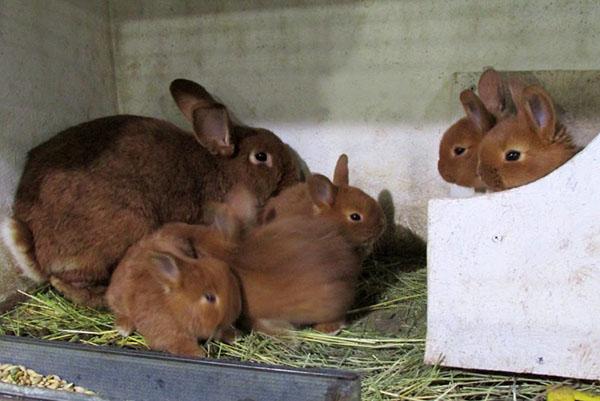
How to properly plant rabbits
There are several options for carrying out this procedure. Each method has certain features.
Simultaneous jigging
This method is used in the case of compacted okrol. In this case, the animals are planted in 30 days. During the procedure, it is worth considering the condition of each rabbit. All cubs must have the same development. Weaker individuals should be provided with additional nutrition and more careful grooming.
Due to the lack of competition between animals, it will be possible to obtain healthy individuals.
When seating rabbits in cages, it is worth considering fatness and sexual characteristics. Animals are distributed by sex no later than 3 months. It is permissible to have 3-7 individuals in the cages.
Weaning with intermittent replanting
If some of the caged animals do not develop well, and the mother has a lot of milk, the cubs are allowed to periodically return to her. This ensures their strengthening.

It should be borne in mind that this method is not considered the most effective, and therefore is rarely used. Rabbits should develop independently from the moment of deposition. If animals are lagging behind in growth, they should be placed separately and immediately raised for meat. Such individuals are more likely to encounter diseases, which threatens the infection of the entire family.
Sorted by degree of development
This method consists in the primary placement of the largest and strongest cubs. After 2-3 days, the rest are moved to a new place. This is done in turn, taking into account growth and development. This method can be used if the female has enough milk.
Equipment of the new residence
The cages are made for 3-7 individuals. It is permissible to plant 10-15 animals in open-air cages. 1 rabbit requires a minimum of 0.2 square meters. Do not keep rabbits from different litters together. If there are no other options, it is worth using a new cage that is not familiar to animals from any litter. This will help avoid fights and damage. If this is not possible, cocky rabbits are kept alone.
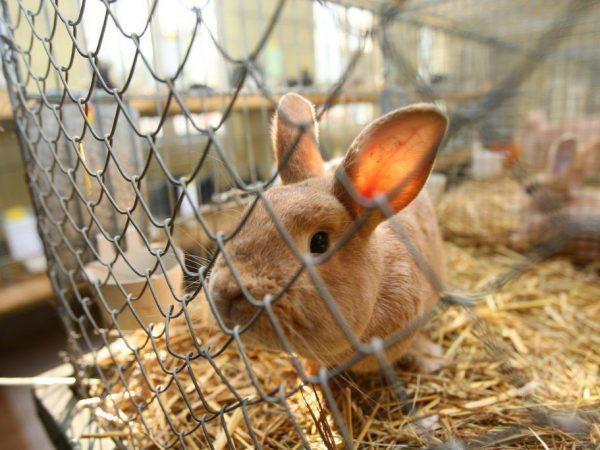
When choosing a new place, it should be borne in mind that it must be dry and warm. Rabbits can hardly tolerate crowding and the effects of drafts. Before transplanting animals, the housing should be treated with an antiseptic. The bottom of the cage can be wood or plastic. The organization of the correct bedding is also important. With its help, it will be possible to keep warm. It is permissible to make the bedding from cardboard, hay, fabric, sawdust.
Feed for the trapped rabbits
It is recommended to feed the cubs correctly, as they have an insufficiently developed digestive system. The first complementary foods are given at 3 weeks. When switching to a new diet, the pH in the stomach drops significantly.
Separated rabbits should be provided with a varied diet. However, at first it is permissible to use only those foods that the nursing mother ate. Otherwise, babies will experience severe diarrhea or inflammatory bowel disease.
New feed should be introduced gradually. This is especially true when using greens. It is forbidden to give fresh grass to rabbits. It is recommended to dry it first. It is forbidden to put a lot of food in a bowl, as rabbits can overeat. Settling rabbits has a number of features. There are several options for carrying out this procedure. For everything to go well, it is recommended to provide the animals with suitable conditions.

